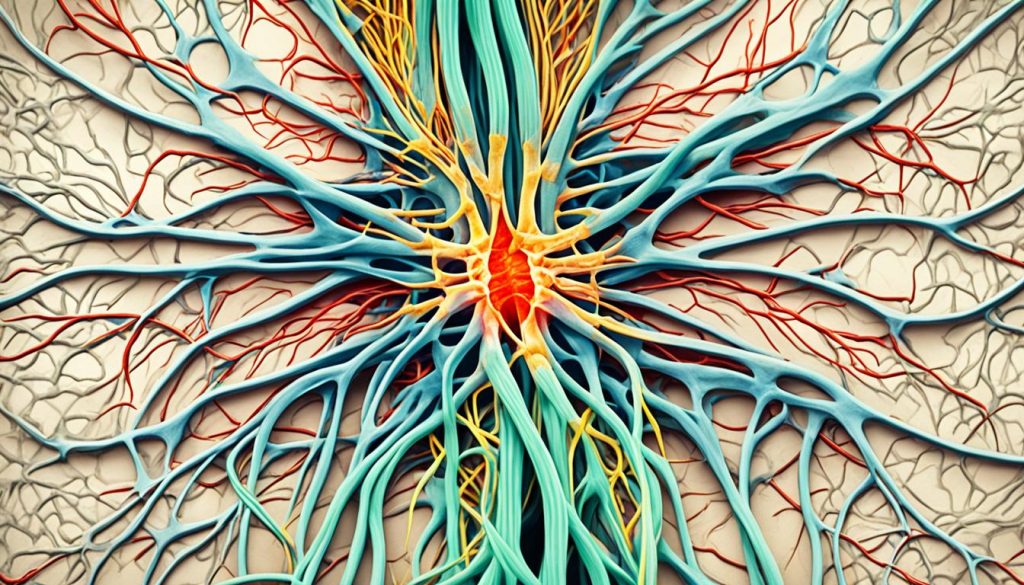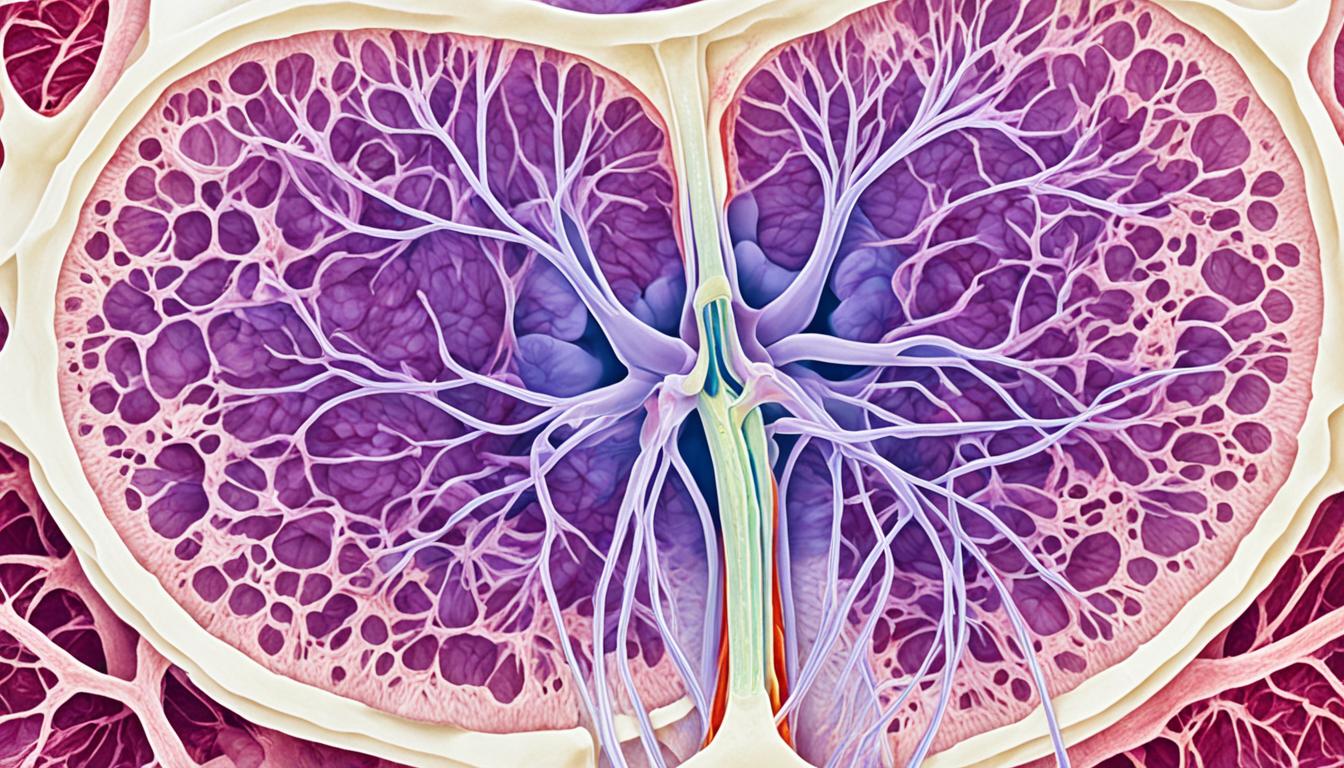Bladder control loss, or urinary incontinence, is something many people deal with. It means not being able to control when you pee. This problem can happen because of things like tumors near your bladder, problems with your brain or spine, radiation therapy, and some medicines. To figure out if someone has bladder control loss, doctors look at the person’s symptoms, health history, and give them a physical check-up. There are different ways to treat it, from changing your daily habits to taking medication or even getting stem cell therapy. It can be tough to handle bladder control issues, but finding the right way to manage it can really help.
Key Takeaways
- Bladder control loss, or urinary incontinence, is a common condition that results in the involuntary leakage of urine.
- Causes of bladder control loss can include tumors near the bladder, radiation therapy, and certain medications.
- Diagnosing bladder control loss involves evaluating symptoms, medical history, and conducting physical examinations.
- Treatment options for bladder control loss range from lifestyle changes to advanced therapies like stem cell therapy.
- With proper management and support, individuals can improve their quality of life and minimize the impact of bladder control issues.
Symptoms of Bladder Control Loss
Bladder control loss, or urinary incontinence, affects people differently. Recognizing symptoms early is key to getting the right help. Some common signs include:
- Loss of bladder control: You might leak urine during activities, sneezes, or coughs.
- Inability to empty the bladder completely: You may feel like you still need to go after using the bathroom.
- Urinary frequency: You could find yourself needing to urinate more often than usual.
- Recurrent urinary tract infections: Bladder issues can lead to more UTIs, causing pain or burning during urination, cloudy urine, and discomfort in the pelvic area.
- Urinary urgency: Some people feel a sudden, strong need to urinate, which can be hard to control.
- Nocturia: If you’re waking up at night to pee, it can disrupt your sleep and affect your overall rest quality.
If you notice any of these symptoms, seeing a healthcare professional is crucial. They can diagnose you correctly and suggest the best treatment. Acting quickly can help manage bladder control problems and better your life quality.
Understanding the Symptoms
The symptoms we talked about can really affect your life. They can cause discomfort, make you anxious, and even limit your social activities. The first step to handling these issues is knowing what they are and getting professional help. Doing this helps you find ways to manage bladder issues and take back control.
Below is a table that summarizes the signs of urinary incontinence:
| Common Symptoms of Urinary Incontinence |
|---|
| Loss of bladder control |
| Inability to empty the bladder completely |
| Urinary frequency |
| Recurrent urinary tract infections |
| Urinary urgency |
| Nocturia |
It’s important to recognize these signs and seek a doctor’s opinion. A specialist can ensure you get an accurate diagnosis and the right treatment for bladder control loss.
Causes and Diagnosis of Bladder Control Loss
Bladder control loss, also known as urinary incontinence, has many causes. Understanding what leads to this condition is key to treating it. Some common causes include:
- Tumors near the bladder
- Radiation therapy to the pelvic area
- Certain medications
- Pelvic prolapse
- Constipation
- Enlarged prostate
Neurological conditions like multiple sclerosis and spinal cord injury can also affect bladder control.
Finding out the cause of bladder control loss involves a few steps by a healthcare professional. They look at the patient’s medical history and perform physical exams. They also use urine tests, imaging, and urodynamic tests to check bladder function. Knowing the root cause helps to create a treatment plan that works for the patient.
Diagnostic Process for Bladder Control Loss
Healthcare professionals have a process to figure out the cause and seriousness of bladder control loss. This process might involve:
- Asking about symptoms, medications, and how the bladder functions.
- Checking pelvic muscle tone and reflexes through a physical exam.
- Using urine tests to look for infections or other issues.
- Getting imaging studies, such as ultrasounds or MRIs, to see the bladder and nearby areas.
- Measuring bladder pressure and urine flow rate with urodynamic testing.
Through these steps, healthcare teams can get a full picture of a patient’s bladder control issues. They can then decide on the best way to treat them.

Treatment Options for Bladder Control Loss
Managing bladder control loss involves a detailed plan tailored to each person. It takes into account the main cause. Treatment options range from lifestyle changes to surgery.
Lifestyle Changes
Making changes in your daily life can greatly help with bladder control. This includes timing your bathroom visits, eating well, and strengthening your bladder through exercise. These steps can lead to better bladder management and less leakage.
Medications
Doctors might prescribe medication to help with symptoms and improve how your bladder works. Depending on the root problem, options can include anticholinergics, alpha-blockers, or hormones. These drugs work by relaxing the bladder, reducing the need to go often, and increasing bladder capacity.
Botulinum Toxin Injections
Botulinum toxin injections are another way to treat bladder control issues. They block the nerves that cause too much bladder muscle contraction. This treatment can lessen muscle contractions, reduce urination frequency, and enhance bladder control.
Catheterization
For some, using a catheter to empty the bladder is necessary. This can be done intermittently or all the time, based on what the person needs. Intermittent catheterization means using a catheter regularly to empty the bladder. Continuous catheterization involves a catheter that stays in place to drain urine all the time.
Stimulation Therapy
Stimulation therapy uses electrical or neuromodulation methods to stimulate bladder-controlling nerves. Examples include sacral neuromodulation and percutaneous tibial nerve stimulation. These therapies help control the bladder in cases where other treatments haven’t worked.
Surgery
If bladder control loss is severe, surgery might be an option. Surgical methods can rebuild the bladder or install an artificial sphincter. Whether to have surgery depends on how serious the problem is, the person’s health, and their specific situation.
| Treatment Options | Description |
|---|---|
| Lifestyle Changes | Implementing scheduled bathroom breaks, dietary modifications, and bladder-strengthening exercises to improve bladder control. |
| Medications | Prescription medications to alleviate symptoms and improve bladder function, such as anticholinergics, alpha-blockers, or hormones. |
| Botulinum Toxin Injections | Injections that block nerve signals, reducing bladder contractions and improving bladder control. |
| Catheterization | Intermittent or continuous catheterization to empty the bladder as needed. |
| Stimulation Therapy | Electrical or neuromodulation techniques to stimulate nerves and improve bladder function. |
| Surgery | Bladder reconstruction or artificial sphincter placement in severe cases. |
It’s crucial for those suffering from bladder control loss to closely collaborate with their healthcare provider. Together, they can create a tailored treatment plan. This plan depends on the person’s unique needs, the reason for their condition, and their health status. With the correct approach, it’s possible to manage bladder control loss and enhance life quality.
Stem Cell Therapy for Bladder Control Loss
Stem cell therapy offers hope for those with bladder control issues, also known as urinary incontinence. This new method uses the healing powers of stem cells to fix and rejuvenate the bladder’s damaged tissues.
These cells can transform into different types needed for the bladder to work right. Studies have shown stem cell therapy might improve bladder control. This can help people manage their urinary flow better.
Still, it’s key to know that this therapy is in the testing phase. It’s not yet a common treatment. More research and clinical trials are needed to make sure it’s safe and effective.
Thinking about stem cell therapy for bladder issues? Talk to a doctor who knows about regenerative medicine. They can help you understand if it’s a good option for you. They can also tell you about any clinical trials you might join.

